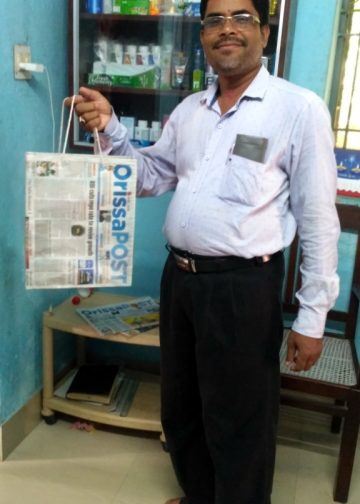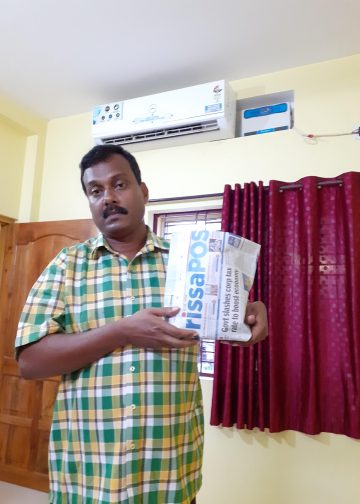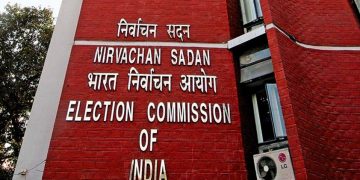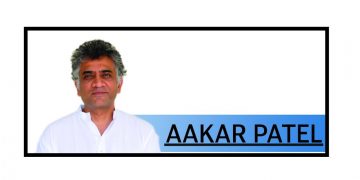Himanshu Guru, OP
Orissa has been wrecked by cyclones with astonishing frequency over the years. While it is impossible to prevent a fatal atmospheric upheaval, it is imperative to devise tools and strategies to mitigate the impact of natural calamities and minimise loss of life and property. Sunday POST speaks to climatologists about the technological advancements over the decades that today enable us to predict disasters and find ways to deal with them…
Orissa’s geographical location renders it vulnerable to natural calamities like cyclones, heatwave and excessive rainfall resulting in floods. As many as 100 cyclones have crossed the Orissa coast since 1891. Experts say the state’s location in a climatic border and its proximity to the coast account for the frequency of cyclones striking it. While mankind can’t preempt natural calamities, preparing ourselves to minimise human, animal and property loss in the incidence of a climatic upheaval is of utmost importance. Technical and scientific advancements have enabled us to devise strategies to mitigate the destruction wrought by natural catastrophes.
Director of the Meteorological Department in Bhubaneswar, Sarat Chandra Sahu, said, “We provide information about upcoming calamities to ensure better preparedness. Our prediction with regard to a cyclone comes at least five days before it hits the state. We provide information related to the intensity of cyclones and track their movements. We usually observe cyclones each day before they cross the coast. We share the necessary information with the state government, media, sports authorities, fishermen, Railways and PWD.”
“When the wind speed crosses 62 km per hour, meteorologists call it a cyclone. So far, Orissa has experienced a maximum wind speed of 260 km per hour during the super cyclone in 1999. During Phailin and Hudhud the wind speeds were around 220 km per hour. A cyclone, if formed in the rainy season, lasts for a short duration, but if it comes around October the duration is longer and the devastation more severe because it takes time to reach the coast. If the pressure area lies at a long distance from the coast, the intensity is higher. Normally, it starts in the south east sea near the Andamans and moves north,” he said.
Asked about the technical developments that now promise to assist in cyclone prediction, Sahu said: “Satellite pictures flashing every 15 minutes help us predict upcoming cyclones. Besides, we have the facility of Doppler radars. We have 20 to 25 such radars in India. The exact direction of wind movements, intensity, and every small detail can be detected through this equipment. It is fitted at the east coast, west coast and the interior of the country. Doppler radars are digital radars which give information about wind speed, their exact location while crossing a coast, direction of movement and intensity,” he added.
The devastation in the super cyclone back in 1999 was very high. But during Phailin in 2013 and Hudhud in 2014, it was minimal. Asked about the reason, Sahu said: “In 1999, we lacked technical ingenuity. We could not figure out the frequency of the cyclone and had no idea about the exact location where it would cross. Besides Doppler radars, many automatic rain reading stations have been installed these days. In fact, we have weather bulletins every three hours,” Sahu said, adding that the media today has become instrumental in conveying vital information to people to help them prepare for, and deal with, natural calamities.
Asked why Orissa is prone to frequent cyclonic disturbances, Sahu replied: “Cyclones form due to low pressure and depression. Mostly, cyclones are formed in the Bay of Bengal, mainly near the south Andaman Sea. During monsoon, temperature rise aggravates the sea surface temperature. This mostly happens during the period from October to December. It normally moves towards northwest to balance the heat in the tropical regions. It affects Andhra Pradesh, West Bengal and Orissa.”
“Another technical development is that today numerical weather prediction tools have been developed that can forewarn the formation of cyclones and their expected intensity as many as 10 days before the calamity strikes,” continued Sahu. “Today we are in a position to track the day-to-day movements of cyclones. Although we confirm only after verification, numerical predictions provide adequate support. It is a computer programme and models of different countries are available. We have it in our MET department. We have the data on our website for anybody to check. Earlier, we used a teleprompter, but nowadays we have become technically sound and send information through fax, telephone, and SMS.”
Besides cyclone, spells of heatwave disrupt life in the state. Sahu said, “We can predict a heatwave like situation before five days and urge people to take necessary precautions. With the help of Doppler radars we can predict thunderstorm and lightning two-three hours before they actually happen. Urbanisation is the biggest reason for the gradual increase in temperatures. In order to curb it, lot of trees should be planted, mainly in the severely affected districts like Bolangir, Sambalpur and Jharsuguda. Restoration of water bodies and small ponds inside the cities should be prioritised since evaporation causes cooling.”
“As as far floods are concerned, we provide forecast on nine river catchments such as the lower Mahanadi, upper Mahanadi, upper Brahmani and lower Brahmani, Bansadhara, Rusikulya, Baitarani, Budhabalanga, Subarnarekha and from June 1 to October 31. The information is supplied to the watershed departments and the Central Water Commission,” he added.
Responding to queries on the monsoons this year, the climatologist said: “This year, there will be normal rainfall ranging from 96 to 100 per cent. Wind speed should not bother normal life as it concerns only fishermen. The fishery department is provided detailed information from time to time.”
“Nowadays the intensity of cyclones has increased globally, mainly because of global warming. Earlier, the intensity was low and it is much more frequent now. Intensity is measured by the DVORAK technique as we get it from a visible cloud picture,” he added.
G K Panda, emeritus professor at the PG department of geography, Utkal University, says, “During the last century many more cyclones crossed the Orissa coast compared to other states. The total number of cyclones crossing the state’s east coast was the highest. Orissa is a climatic border between North and South India and like political borders climatic borders are always in conflict. In North India, the climate is extreme, both in the summer and winter months. But in south India, during summer it is hot, but winter is cool, not cold. So, there are two different types of climates. Orissa is vulnerable to cyclones because it lies on the climatic border close to the coast. Madhya Pradesh, too, is on the climatic border, but since it is not close to the coast, it is seldom as badly affected as Orissa. Again, Gujarat is on the climatic border, but fortunately the west coast is atmospherically less more prone to cyclone formations compared to the east coast. When a low pressure is formed over the sea surface, it often converts into cyclones, but if a low pressure forms over land there is no such effect. As there are so many small islands in the east coast, the frequency of low pressure formation is higher. When above the surface of these islands temperature rises, it converts into low pressure thus often leading to cyclones.”
Asked why Orissa was particularly vulnerable to cyclones, Panda replied: “The Inter-Tropical Convergence Zone (ITCZ) crosses over the Bay of Bengal. ITCZ is the area encircling the earth near the Equator where the northeast and southeast trade winds converge. Most of the lower part of the Equator is sea, but the upper part is mostly land. Trade winds from the Tropic of Capricorn flows towards the Equator over which the sun stays twice a year. Now, the sun has almost reached the Tropic of Cancer. So now, although lot of cloud patches will move over us, those will not produce rain. That is why ‘Mora’ moved away. When the clouds cool down it rains. After June 22, the trade winds will blow from north to south towards Orissa. Gradually, towards October-November, the winds will move to Tamil Nadu.”
Dwelling on the specific scientific measures taken to predict and mitigate the devastating impact of calamities, Panda said: “There is no scope to check or prevent a calamity because by trying to do so you might disrupt climatic patterns and thereby invite greater devastation. Suppose we bombard a cyclone and make the cloud rain fall on the sea, it would inevitably affect the climate on land. A cyclone is a natural phenomenon. It is important to understand the atmospheric factors causing it as well as to track its movements in the effort to not only prepare for impending disaster but also to eventually ride over the crisis.”







































